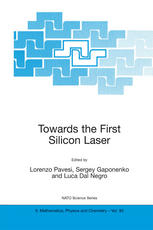

Most ebook files are in PDF format, so you can easily read them using various software such as Foxit Reader or directly on the Google Chrome browser.
Some ebook files are released by publishers in other formats such as .awz, .mobi, .epub, .fb2, etc. You may need to install specific software to read these formats on mobile/PC, such as Calibre.
Please read the tutorial at this link: https://ebookbell.com/faq
We offer FREE conversion to the popular formats you request; however, this may take some time. Therefore, right after payment, please email us, and we will try to provide the service as quickly as possible.
For some exceptional file formats or broken links (if any), please refrain from opening any disputes. Instead, email us first, and we will try to assist within a maximum of 6 hours.
EbookBell Team

0.0
0 reviewsSilicon, the leading material in microelectronics during the last four decades, also promises to be the key material in the future. Despite many claims that silicon technology has reached fundamental limits, the performance of silicon microelectronics continues to improve steadily. The same holds for almost all the applications for which Si was considered to be unsuitable. The main exception to this positive trend is the silicon laser, which has not been demonstrated to date. The main reason for this comes from a fundamental limitation related to the indirect nature of the Si band-gap. In the recent past, many different approaches have been taken to achieve this goal: dislocated silicon, extremely pure silicon, silicon nanocrystals, porous silicon, Er doped Si-Ge, SiGe alloys and multiquantum wells, SiGe quantum dots, SiGe quantum cascade structures, shallow impurity centers in silicon and Er doped silicon. All of these are abundantly illustrated in the present book.